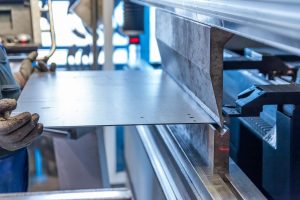What is Stainless Steel Fabrication?
 Stainless steel is a popular material choice for a variety of products and structures due to its durability, corrosion resistance, and high strength. It is often used in fabrication processes to create a wide range of products and equipment. But what exactly is stainless steel fabrication, and what are the key considerations when working with this material?
Stainless steel is a popular material choice for a variety of products and structures due to its durability, corrosion resistance, and high strength. It is often used in fabrication processes to create a wide range of products and equipment. But what exactly is stainless steel fabrication, and what are the key considerations when working with this material?
In this article, we’ll dive into the basics of stainless steel fabrication and explore some of the key considerations and techniques involved in the process.
What is Stainless Steel Fabrication?
Stainless steel fabrication is the process of shaping and joining together pieces of stainless steel material to create structures, products, or equipment. This process involves cutting, bending, welding, and assembling the steel parts to meet specific design requirements.
- Cutting: This involves using tools like saws, plasma cutters, or water jets to cut the steel into the desired shape and size.
- Bending: This involves using a press brake or similar tool to bend the steel into a specific shape.
- Welding: This involves using heat and pressure to fuse two pieces of steel together. There are several different welding techniques that can be used with stainless steel, including TIG welding, MIG welding, and Stick welding.
- Assembling: This involves putting together the different pieces of the fabrication project to create the final product. This may involve welding, fastening, or other techniques to join the pieces together.
When it comes to stainless steel fabrication, precision is key. The fabrication process must be carefully controlled to ensure that the final product meets the desired specifications and meets the requirements for strength, durability, and corrosion resistance.
Key Considerations for Stainless Steel Fabrication
There are a number of key considerations that must be taken into account when working with stainless steel for fabrication. These include:
- Corrosion resistance: One of the main benefits of stainless steel is its resistance to corrosion. However, it's important to choose the right grade of stainless steel for the specific application, as different grades have different levels of corrosion resistance.
- Material selection: There are many different grades of stainless steel available, each with its own unique properties and characteristics. When choosing a grade of stainless steel for a specific fabrication project, it's important to consider factors such as strength, hardness, and resistance to corrosion.
- Welding: Welding is a critical part of the stainless steel fabrication process, and it's important to choose the right welding technique for the specific application. The choice of welding technique will depend on factors such as the thickness and type of the stainless steel being used, as well as the desired finished appearance.
- Heat treatment: Stainless steel may need to be heat treated during the fabrication process to improve its properties and ensure that it meets the desired specifications. This can involve annealing, hardening, or tempering, depending on the specific requirements of the project.
- Finishing: The final appearance of the stainless steel fabrication is also an important consideration. A variety of finishing techniques can be used to enhance the appearance and improve the durability of the product, including polishing, sandblasting, and electroplating.
Conclusion
Stainless steel fabrication is a versatile and precise process that can be used to create a wide range of products and structures.
